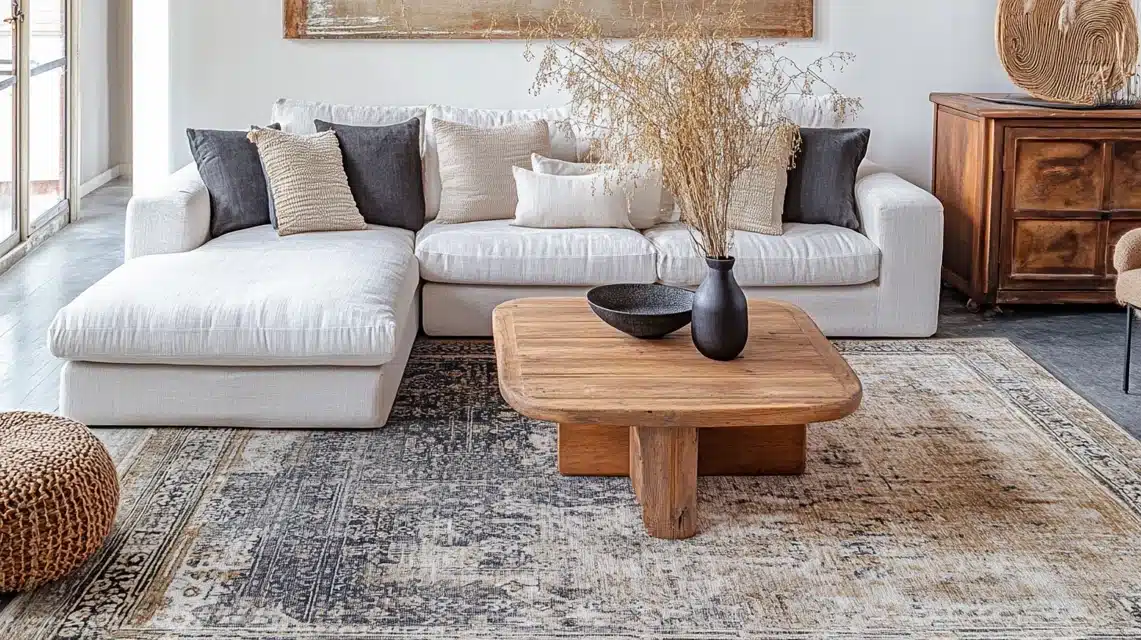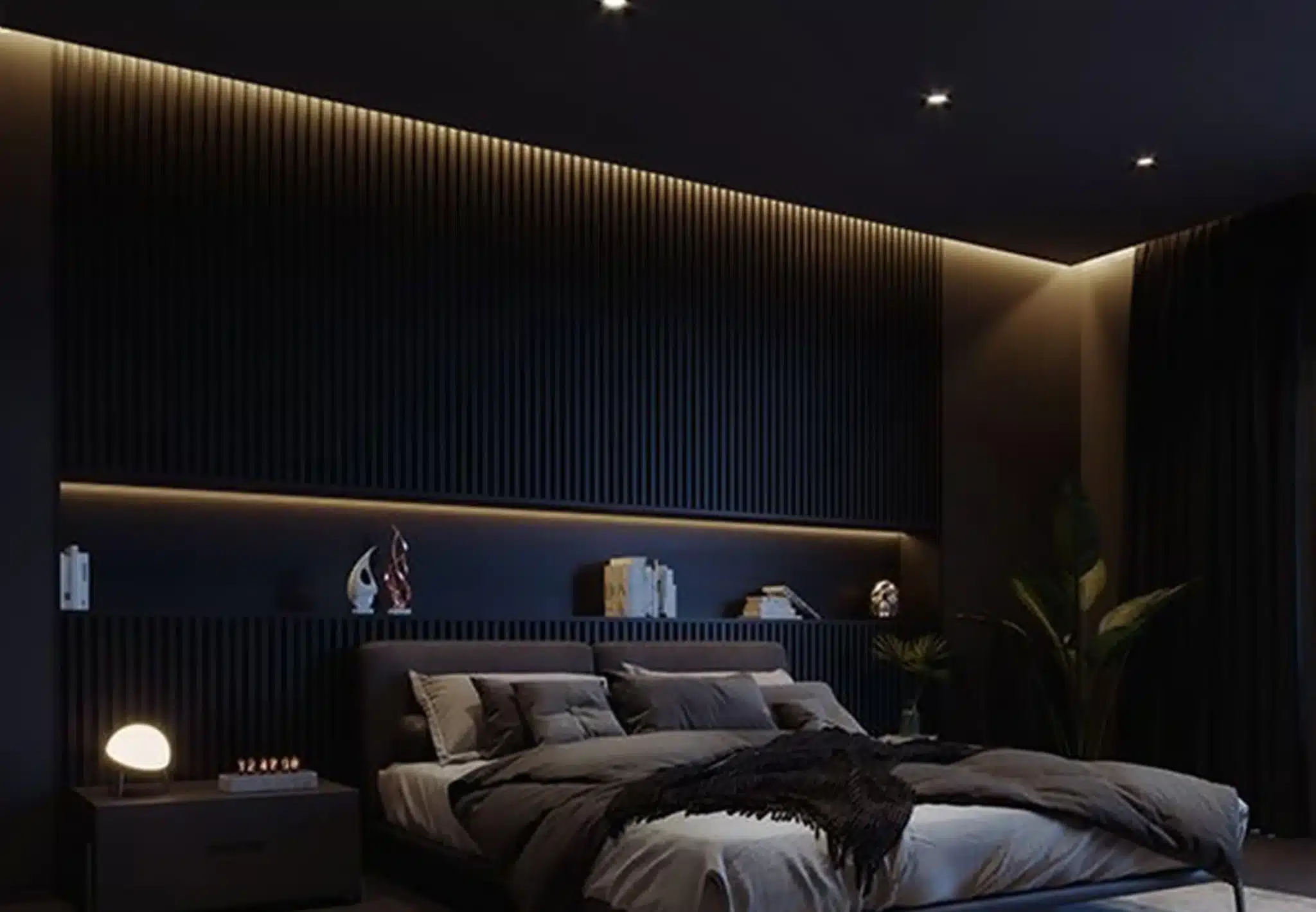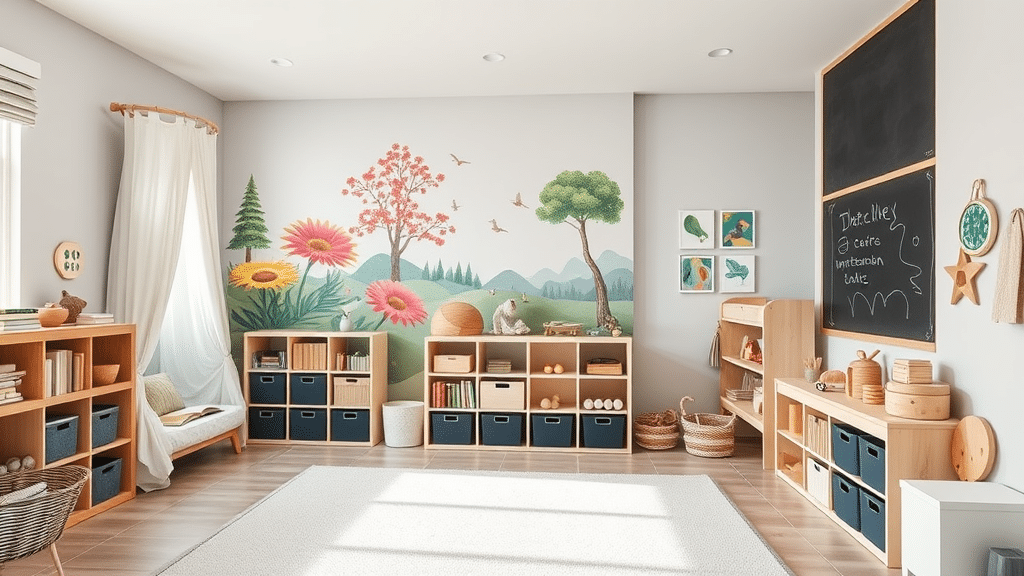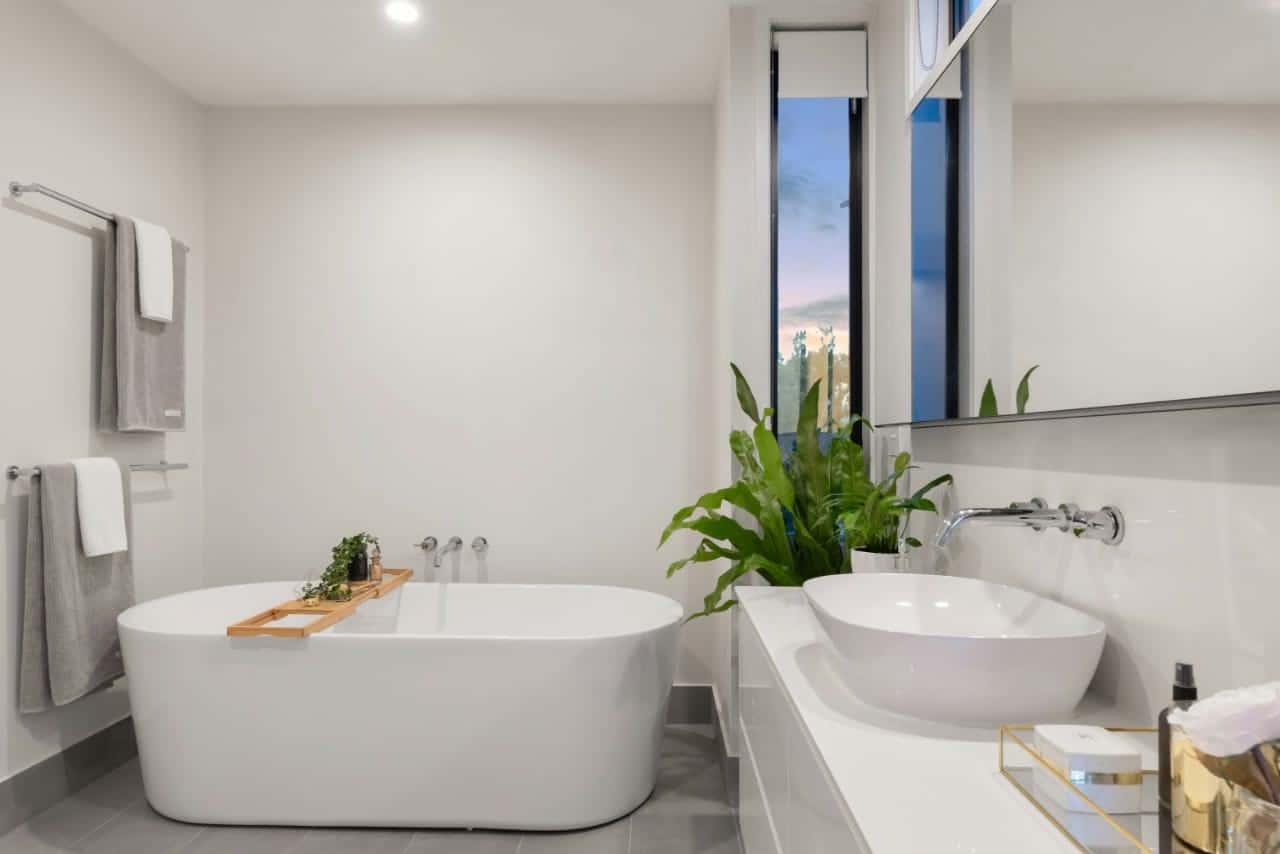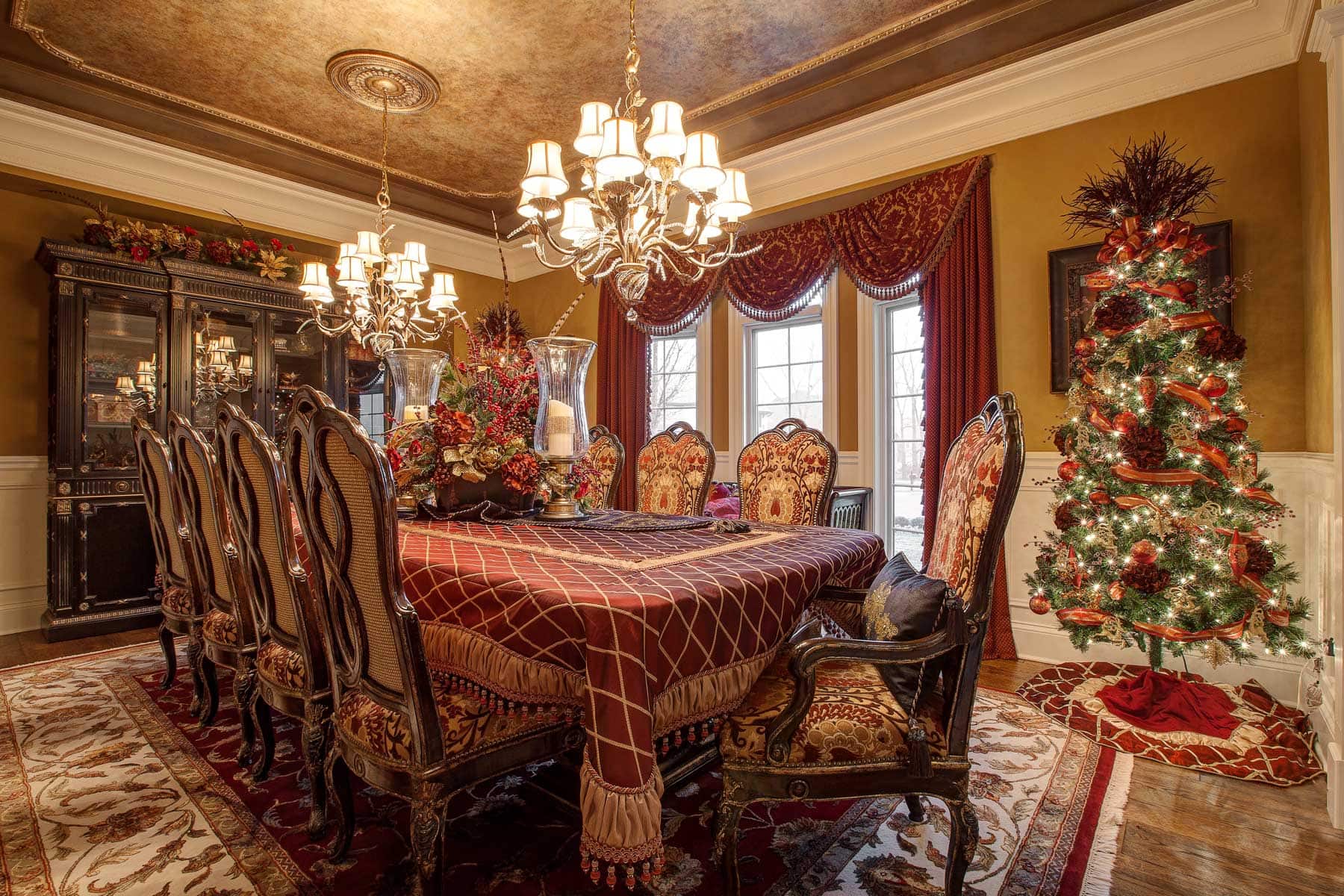28 Living Room Essentials You Can Add to Your Space
A well-designed living room blends comfort, function, and style to create a space where family and friends can gather and relax.
Whether starting fresh or updating your current space, having the right essentials makes all the difference.
This guide walks you through 28 must-have items that transform an empty room into a welcoming haven.
Each element plays a key role in creating a space that works for your lifestyle while looking pulled together and inviting, from core furniture pieces to decorative touches.
Make sure you have these living room essentials for an inviting living room!
1. Sofa/Couch
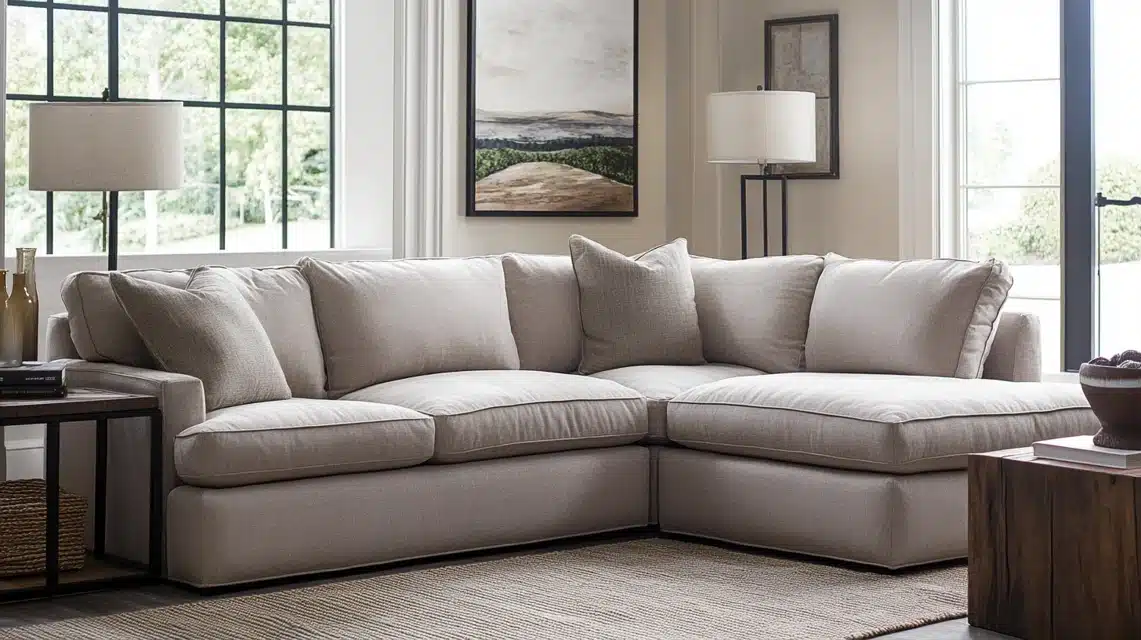
The main seat in your living room sets the foundation for the entire space. Look for one that is the right size and comfort for you.
Consider your lifestyle when selecting materials – homes with kids or pets need sturdier, easy-to-clean fabrics.
A good sofa should last 5-10 years, so pick a style that won’t quickly feel outdated. Focus on quality construction and durable frame materials, such as kiln-dried hardwood.
2. Coffee Table
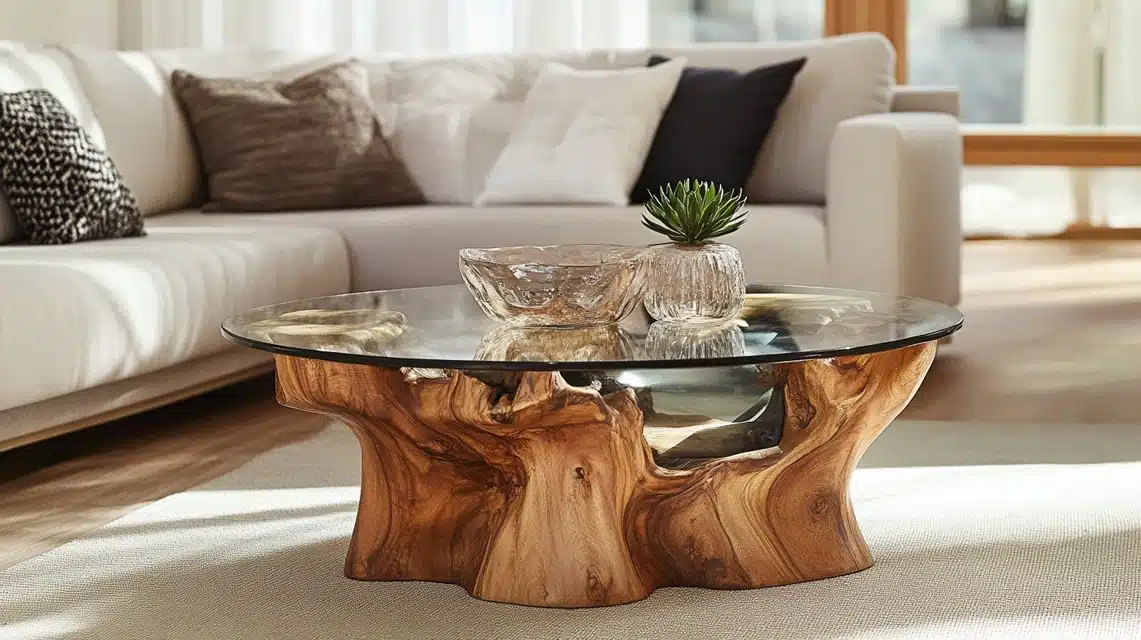
This piece serves as both a functional surface and a style statement. Select a height that works well with your sofa (slightly lower than the seat height is ideal).
The shape should complement your seating arrangement – rectangular tables work well with traditional sofas, while round ones suit sectionals.
Consider materials based on use – glass tops need frequent cleaning, while wood offers durability.
3. End/Side Tables
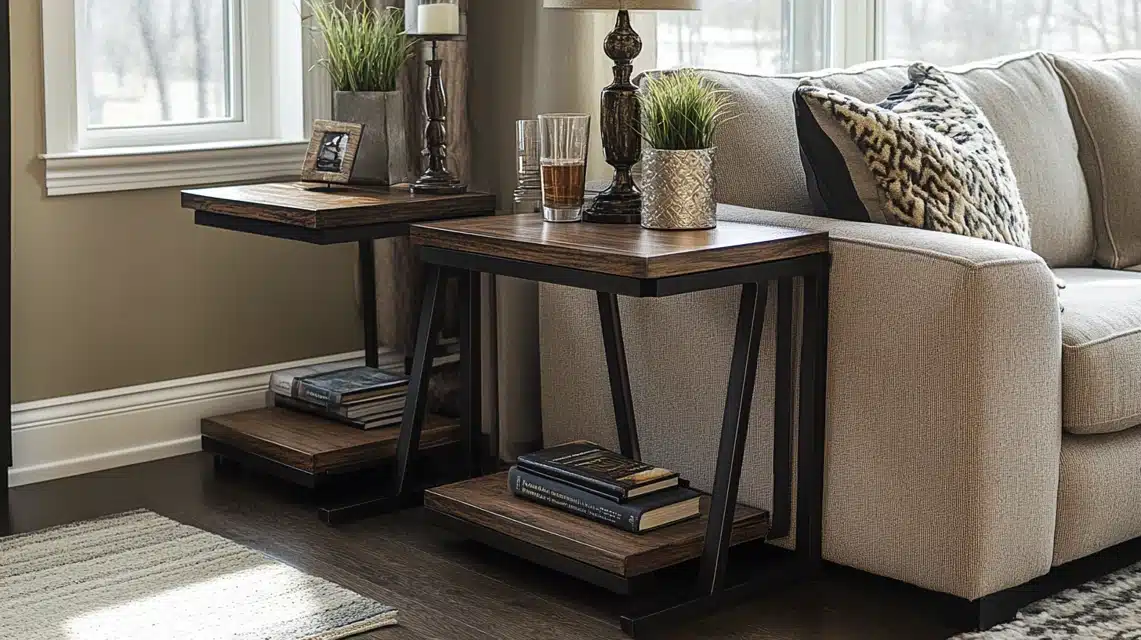
These smaller tables improve the functionality of your seating areas by providing spots for drinks, books, and lamps.
Place them within easy reach of chairs and sofas. For convenience, the height should be close to the arm height of your sofa.
While they don’t need to match exactly, they should coordinate with your coffee table in style or finish.
4. TV
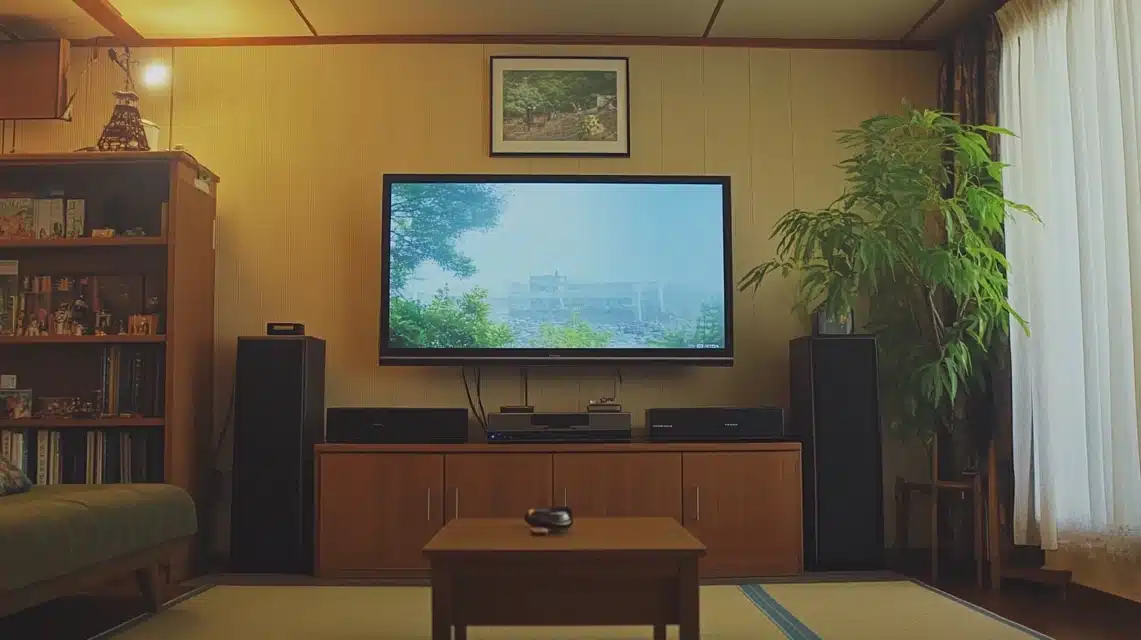
Consider screen size based on your room dimensions and typical viewing distance.
As a general guide, measure the distance from your seating to the TV location in inches, then divide by 2 to find a suitable screen size.
Mount height matters, too – the center of the screen should be at eye level when seated for comfortable viewing.
5. Media Console
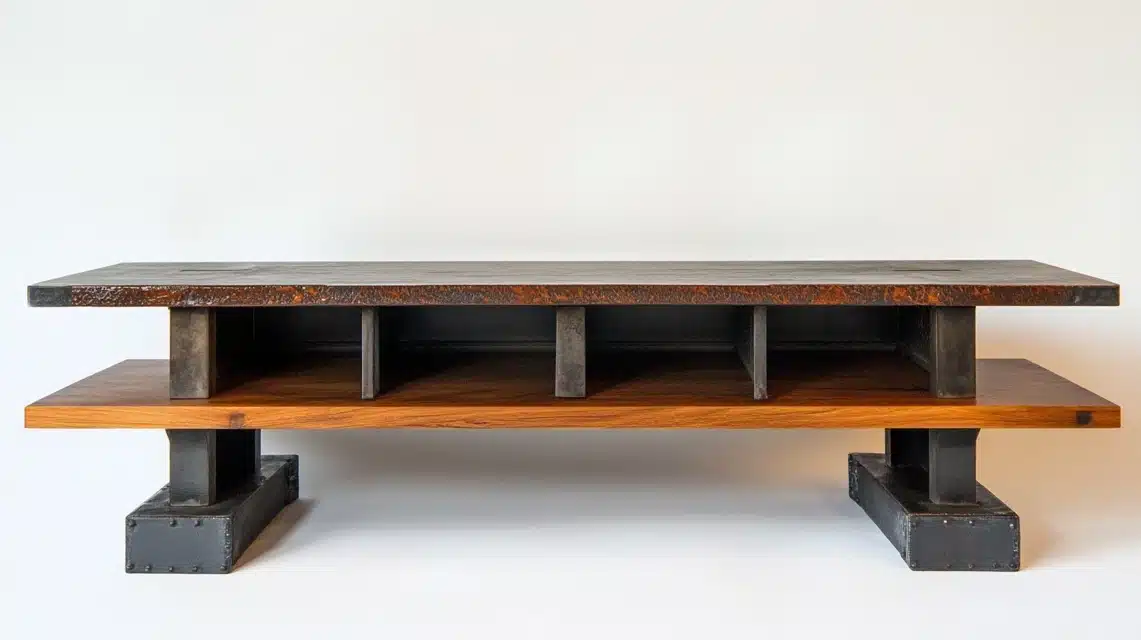
This piece holds your TV components while hiding unsightly cords and cables.
Size it appropriately for your TV—the console should be wider than your screen. If it houses electronic components, look for adequate ventilation.
Storage options like drawers or cabinets help organize remotes, games, and media. For a tidier look, consider cable management features.
6. Accent Chairs
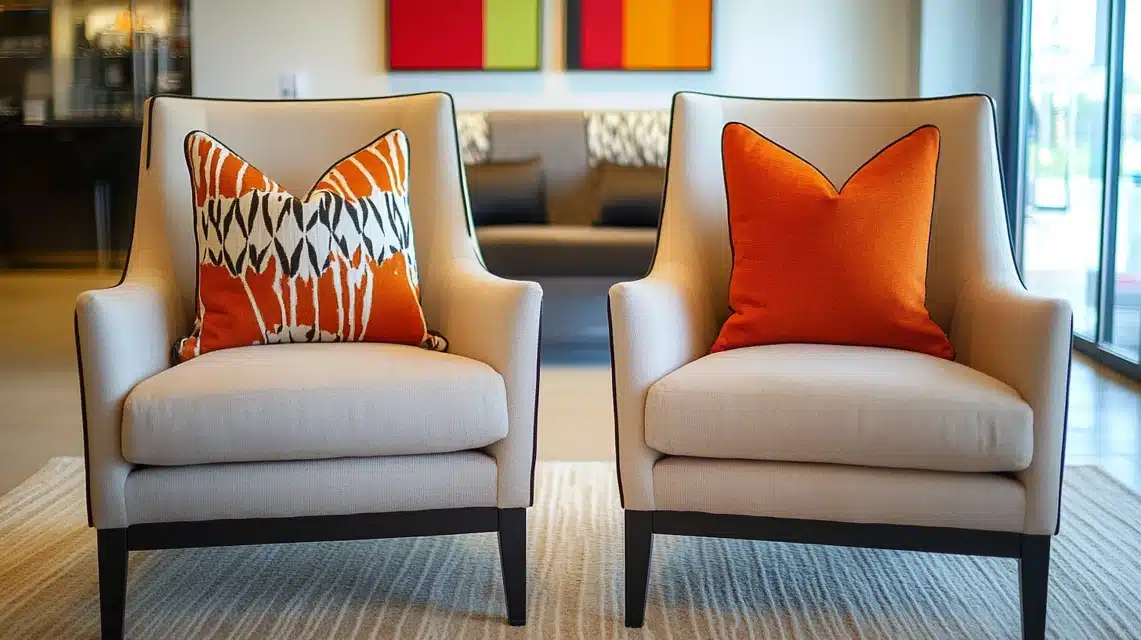
Extra seating that complements your main sofa while adding visual interest.
Choose chairs that blend with your overall style but aren’t exact matches to your sofa. The scale should work with your other furniture—it should not be too big or small.
Position them to create conversation areas. Swivel chairs offer flexibility for TV viewing or chatting.
7. Floor Lamp
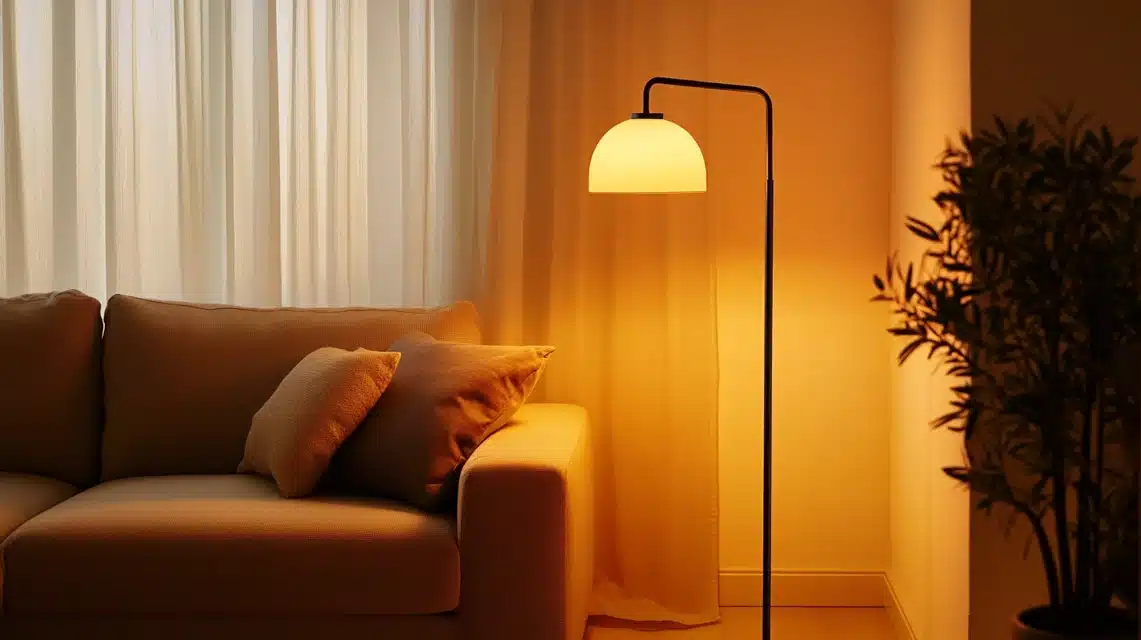
It provides both task lighting for reading and ambient light to set the mood. Place it near seating areas that need extra illumination.
Look for adjustable options to direct light where needed. The height should allow light to fall over your shoulder when seated.
Consider dimming features for flexibility in lighting levels throughout the day.
8. Table Lamps
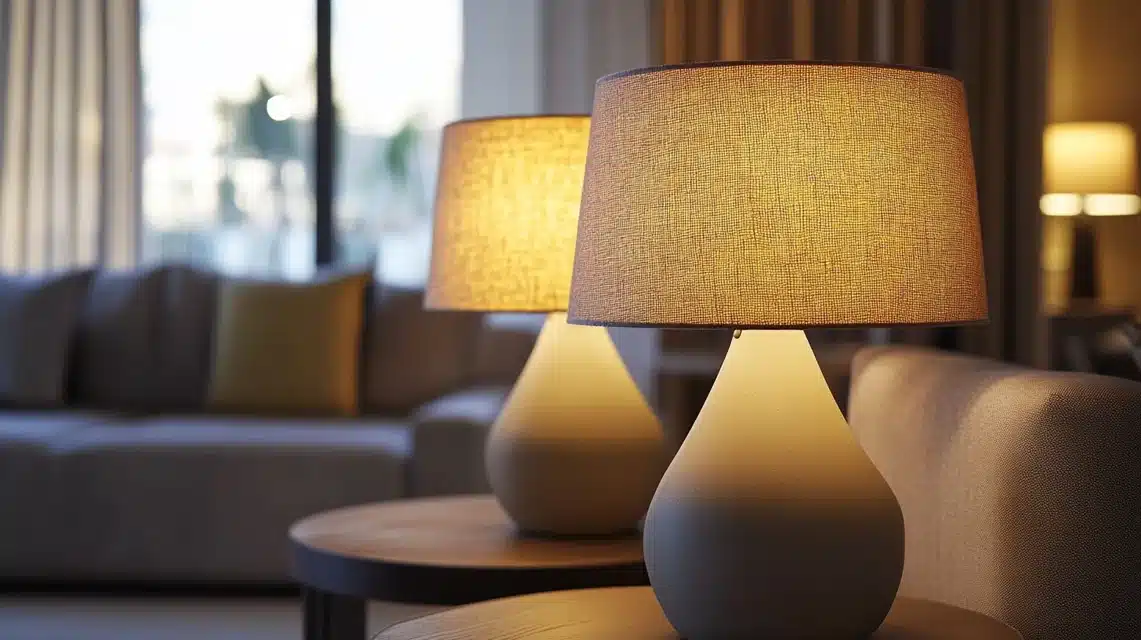
Add layers of light while serving as decorative elements. Place on end tables or consoles for balanced lighting throughout the room.
The bottom of the lampshade should be at eye level when seated for optimal light distribution.
Choose sizes proportional to your tables – the total lamp height should be about 1.5 times the table height.
9. Area Rug
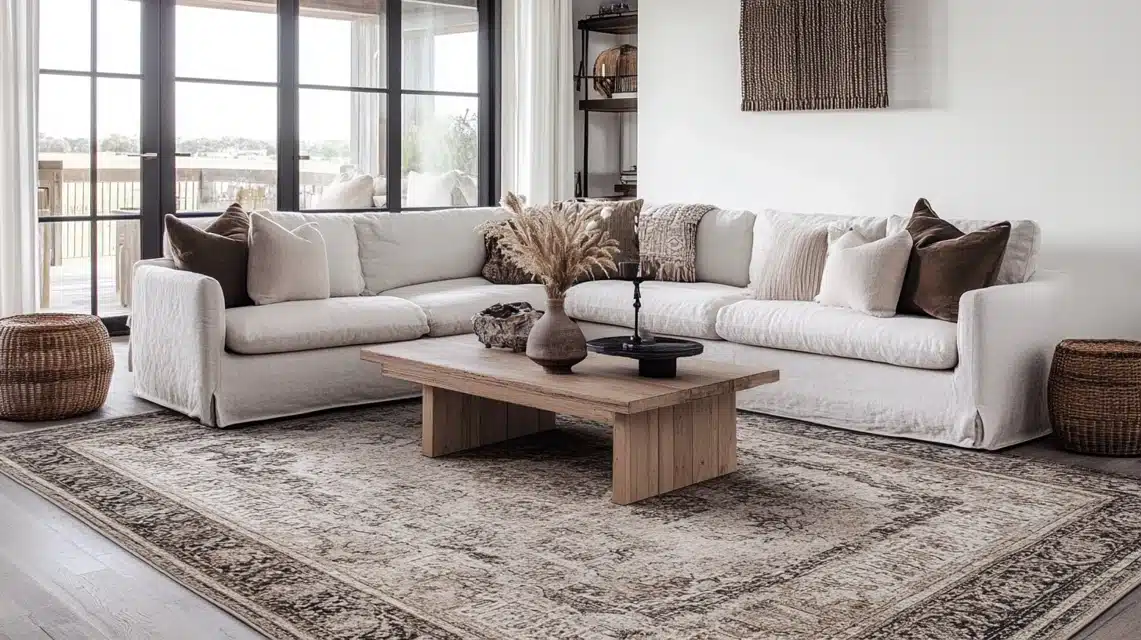
It creates a defined space and adds warmth underfoot. Size matters—all furniture legs should either be on or off the rug for a cohesive look.
In larger rooms, leave 12-18 inches of floor showing around the edges. Consider traffic patterns when choosing materials and colors. The rug should extend 6-8 inches beyond the sofa sides.
10. Curtains/Drapes
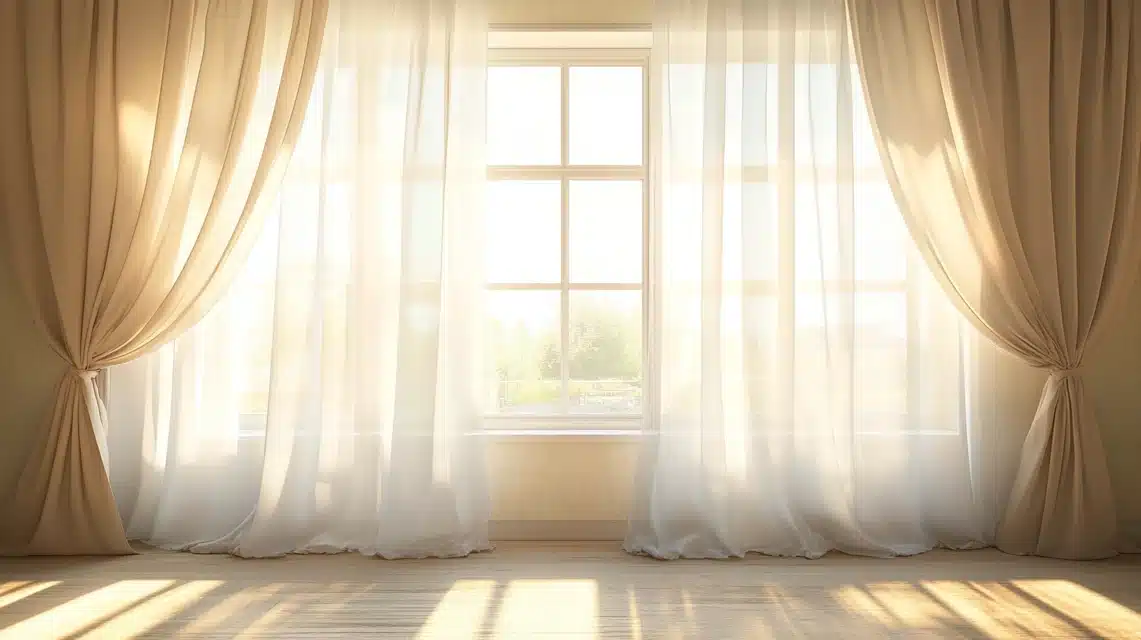
Window treatments provide privacy and light control while adding visual softness.
Hang them high and wide to make windows appear larger and maximize natural light.
The bottom should touch the floor or have a slight break—layer sheer and heavier panels for complete light control and increased insulation.
11. Artwork/Wall Decor
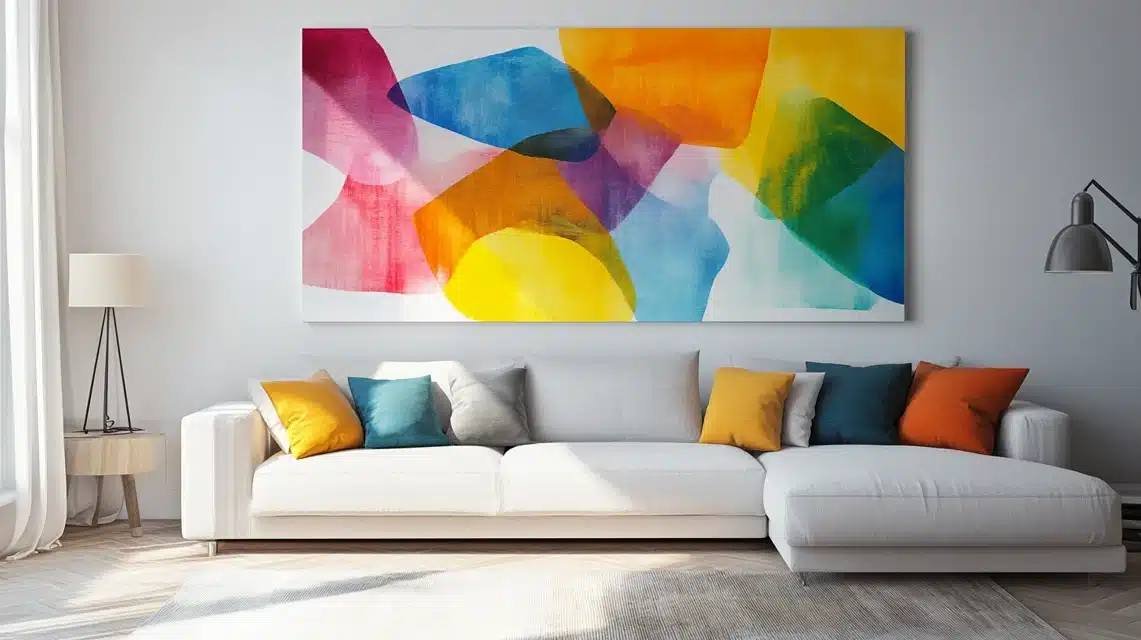
It personalizes your space while adding visual interest to walls. When standing, hang art at eye level (about 57-60 inches from the floor to the center).
Scale pieces to your wall size should take up 2/3 to 3/4 of the wall width. Group smaller pieces together for impact. Mix mediums for added interest.
12. Throw Pillows
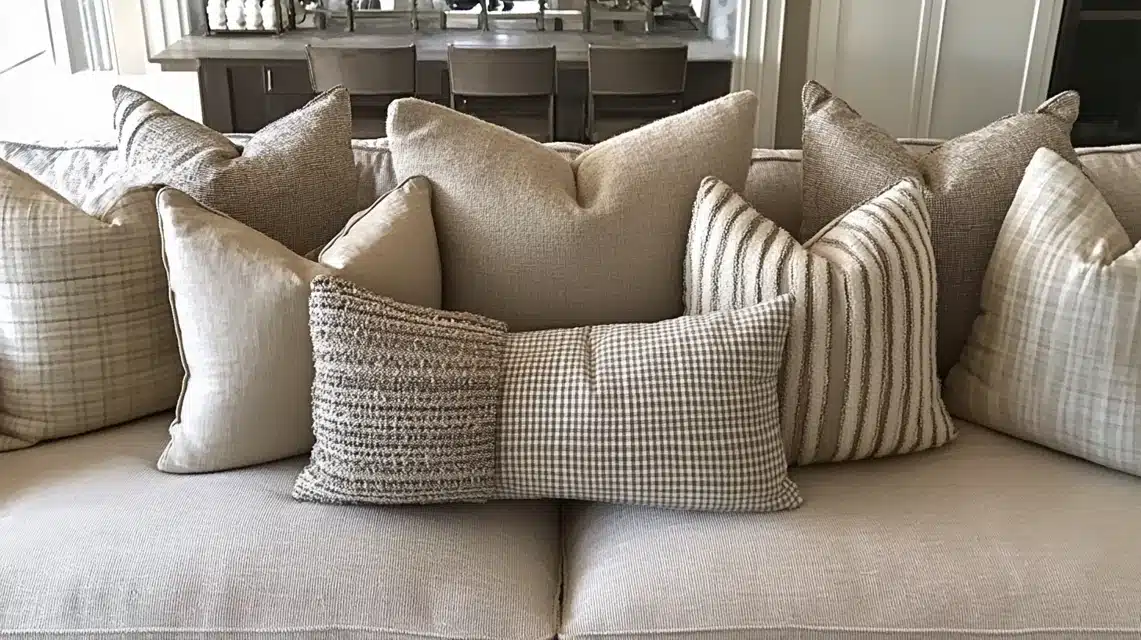
Add comfort and style while being easy to update seasonally. Use odd numbers for natural groupings. Mix patterns while keeping a consistent color theme.
Include pillows of various sizes and shapes for visual interest. Choose covers that can be removed for cleaning. Two to three pillows per sofa seat are typically sufficient.
13. Throw Blankets
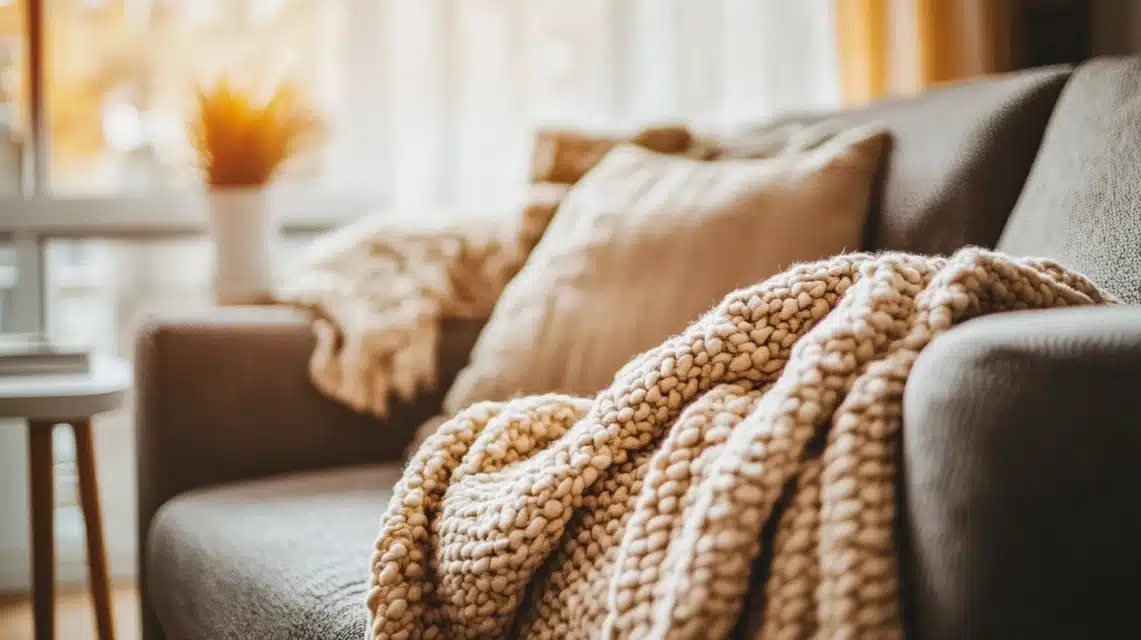
By adding texture and warmth, you can offer both function and style. Drape them casually over sofa arms or backs for a lived-in look.
Choose materials based on your climate and season. Keep extras in baskets for guests. Select colors and textures that complement your other textiles while adding visual interest.
14. Plants/Greenery
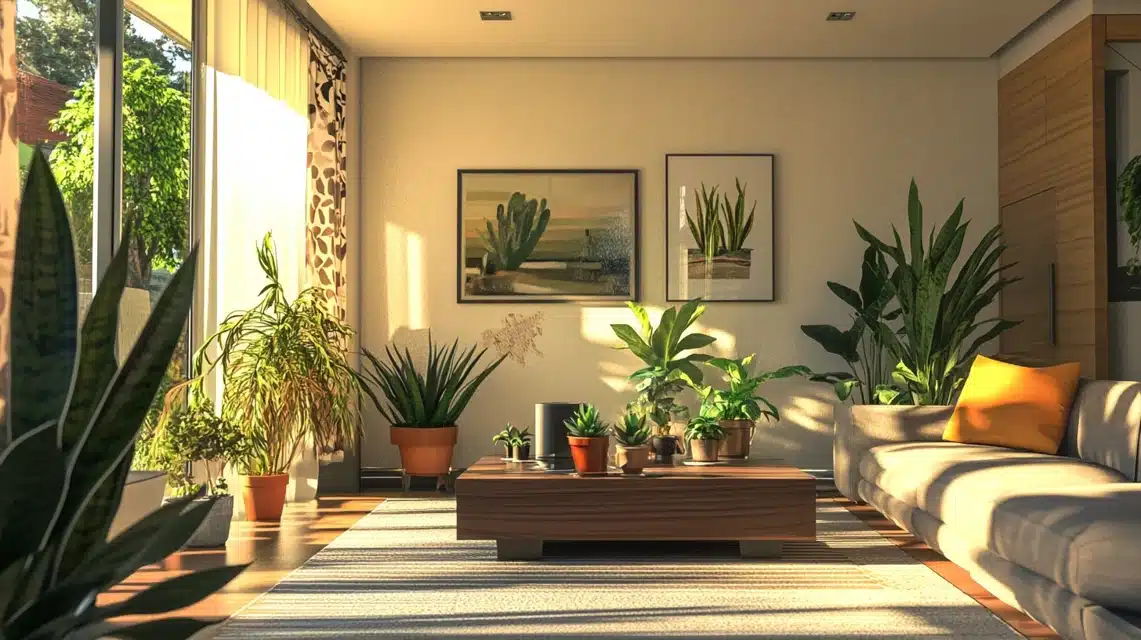
Bring life and fresh air to your space. Choose varieties suited to your room’s light levels.
Mix plant sizes and heights for visual interest. Use attractive containers that complement your decor.
If you’re new to plant care, consider low-maintenance options like snake plants or pothos. Group in odd numbers for natural arrangements.
15. Candles
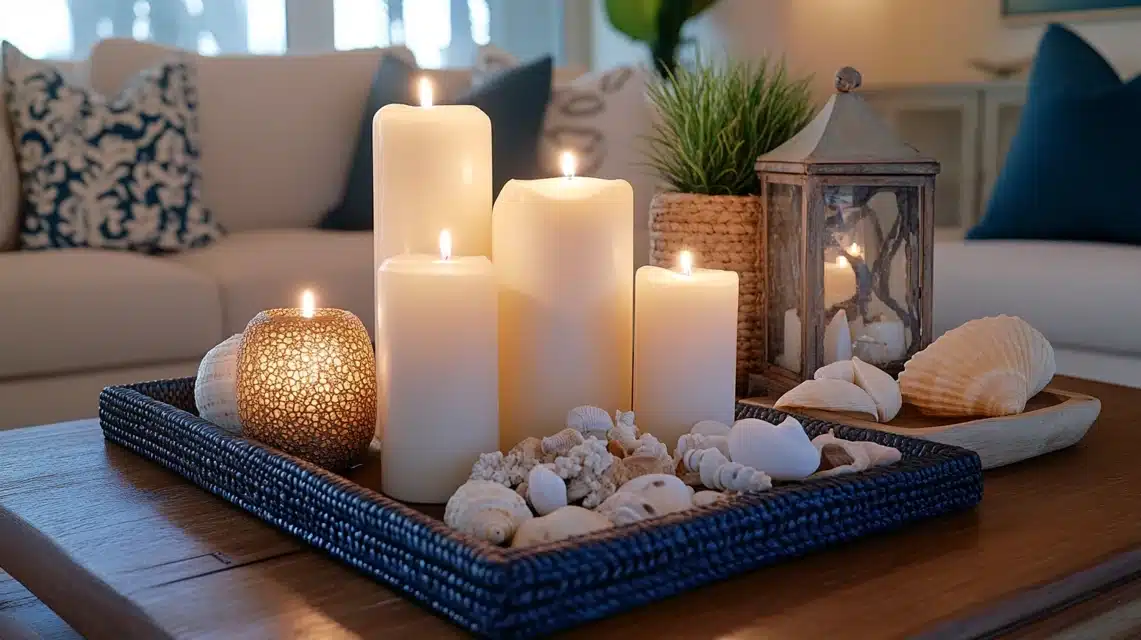
Create an atmosphere and add subtle fragrance—group in varying heights for visual interest. Use flameless options for safety in homes with kids or pets.
Place on trays or dishes to protect surfaces. Consider seasonal scents to refresh your space throughout the year. Use unscented options when displaying multiple candles.
16. Personal Photos
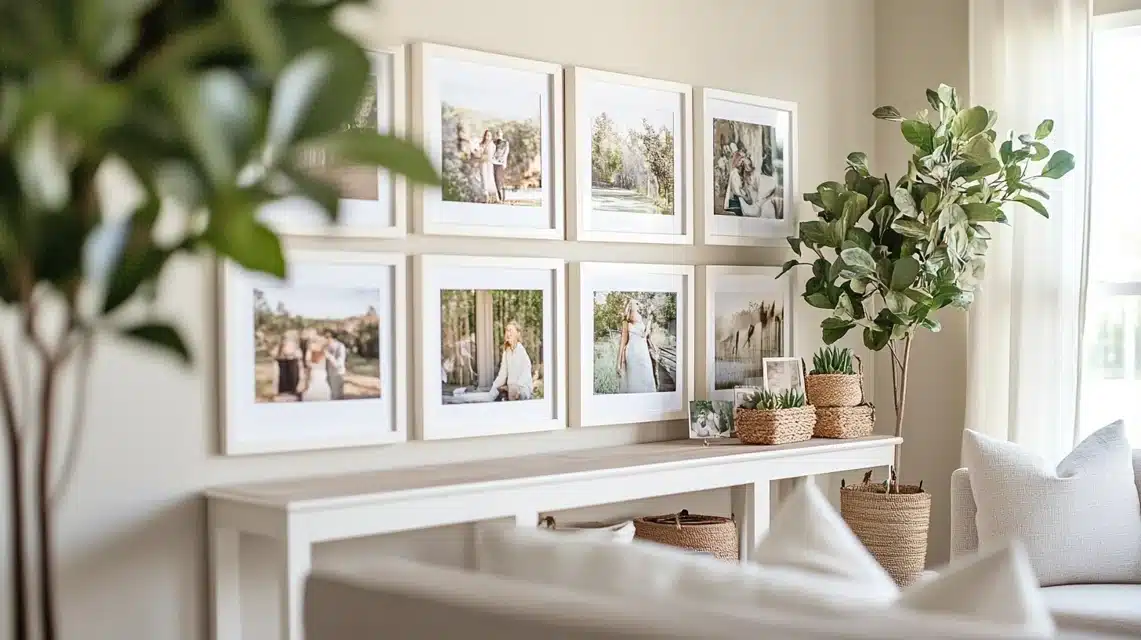
Make your space feel like home with carefully selected memories. Display in coordinated frames for a pulled-together look.
Mix sizes while maintaining a common element, such as frame color or style. When possible, keep arrangements at eye level.
Consider creating small groupings rather than scattering single frames. Update photos periodically to keep displays fresh.
17. Baskets
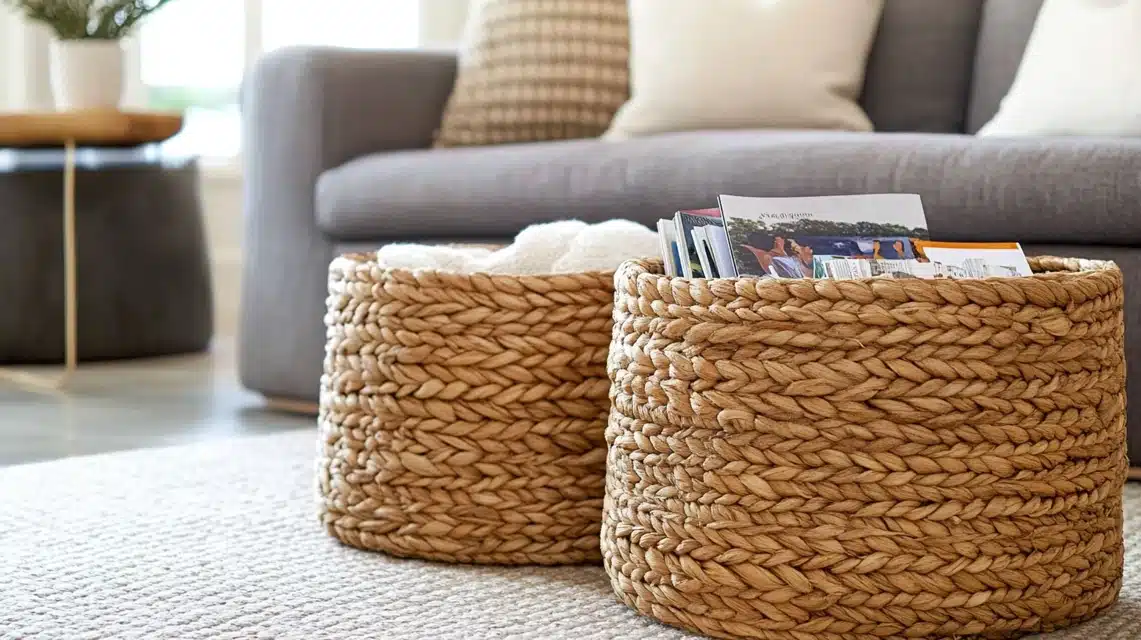
Keep items organized while adding natural texture. Use larger baskets for blankets and pillows and smaller ones for remotes and magazines.
Mix materials and weaves for visual interest. Place near seating areas for easy access. Choose sizes appropriate for their intended contents.
Look for sturdy construction that can handle daily use.
18. Light Fixtures
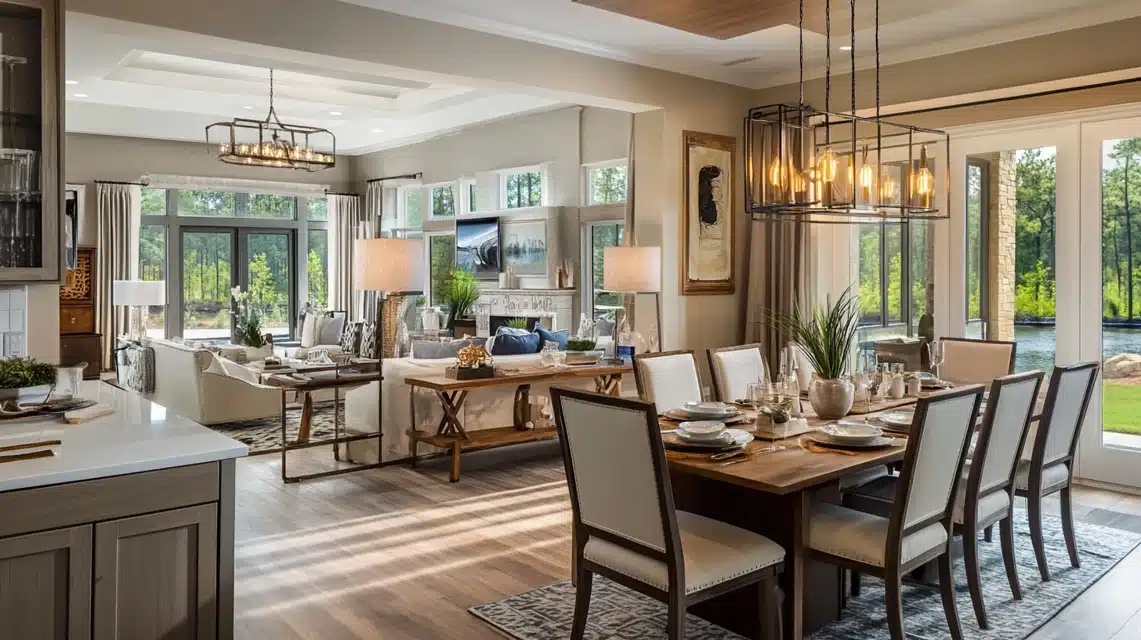
Create layers of light with a mix of fixtures. Include overhead lighting for general illumination, plus task lighting for reading areas.
Consider installing dimmer switches for flexibility. Space fixtures evenly to avoid dark spots.
Choose styles that complement your other metal finishes. Think about bulb temperature for the desired ambiance.
19. Small Accent Pieces
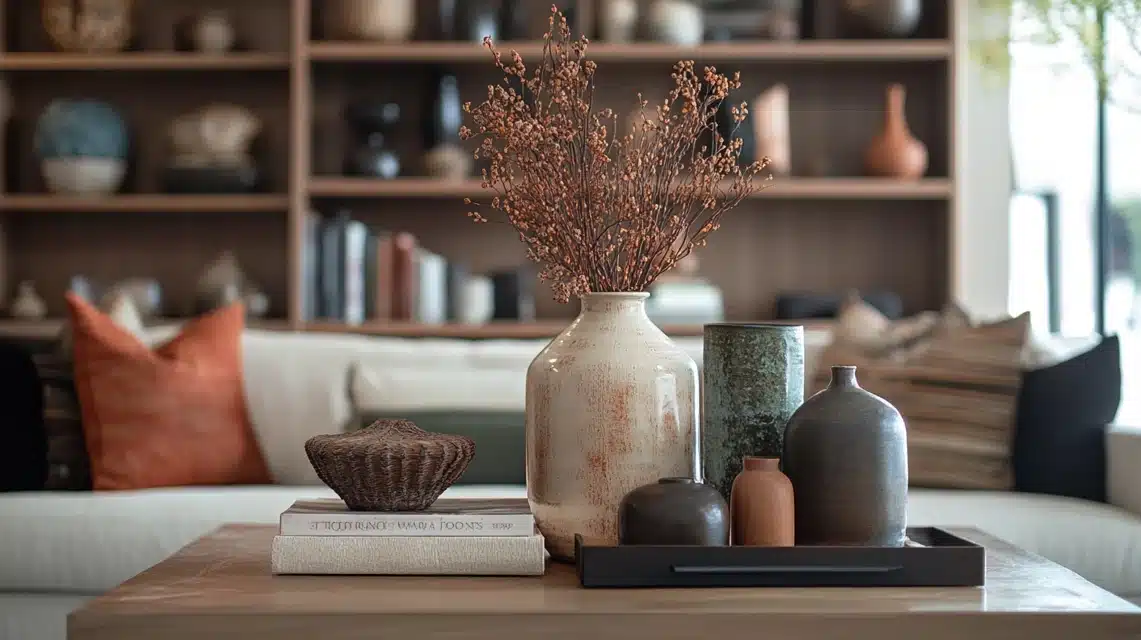
Add personality with carefully chosen accessories. For visual interest, include varied heights and textures. Group items in odd numbers.
Use trays to corral smaller items on tables. Select pieces that tell your story or reflect your interests. Rotate seasonally to keep your space feeling fresh.
20. Loveseat
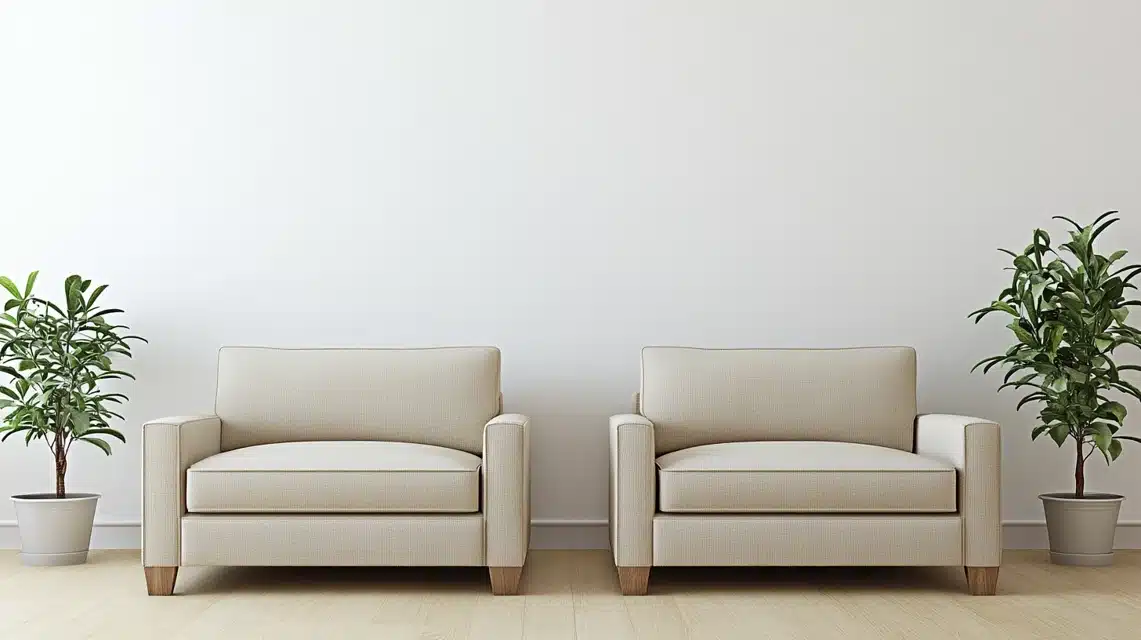
These are perfect for smaller spaces or as additional seating in larger rooms. Choose a style that coordinates with your main sofa without matching exactly.
The size should be proportional to your other furniture. When placing, consider the traffic flow. Look for the same quality construction as your sofa for consistent wear.
21. Sectional
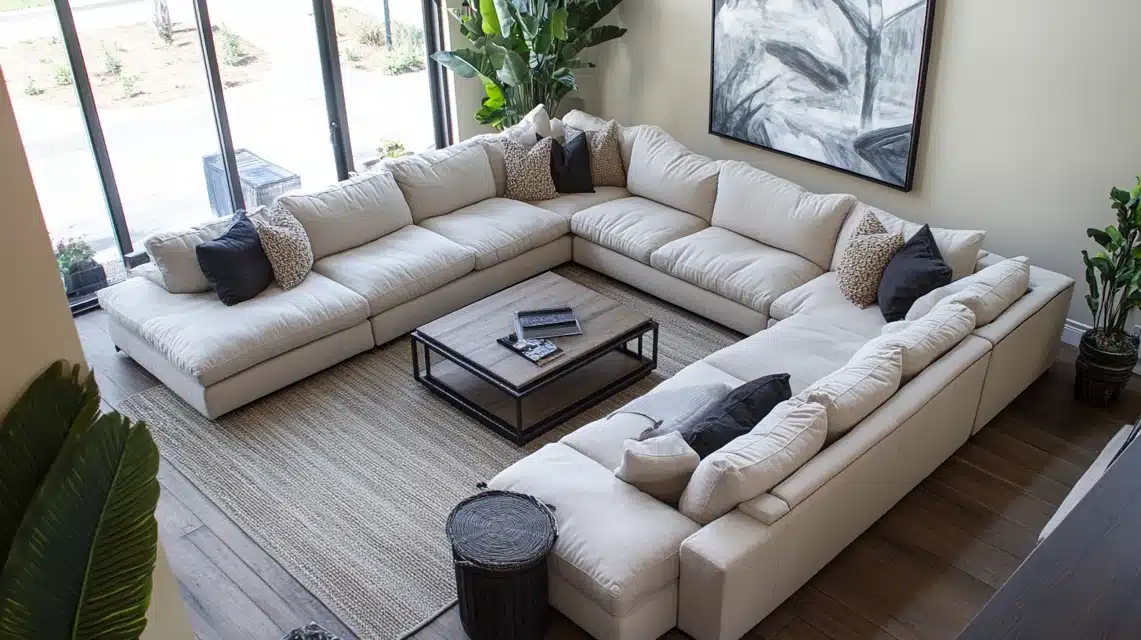
Maximizes seating in larger spaces. Consider a modular design for flexibility in arrangement. Choose a configuration that fits your room’s layout and traffic patterns.
Look for cushions with removable covers for easy cleaning. Make sure the size allows for comfortable movement around the room.
22. Chaise
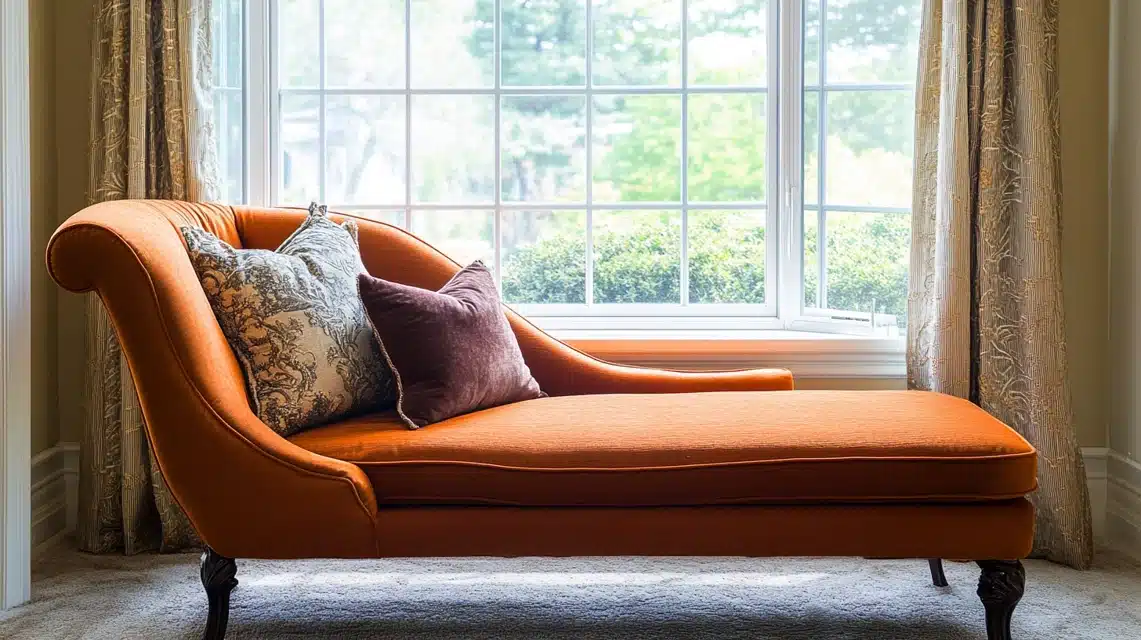
It offers a comfortable spot for lounging. Place it near windows for a cozy reading nook. Choose upholstery that coordinates with other seating.
Consider a storage option under the seat. Size should allow for comfortable traffic flow around it. Look for sturdy construction that supports various sitting positions.
23. Bench
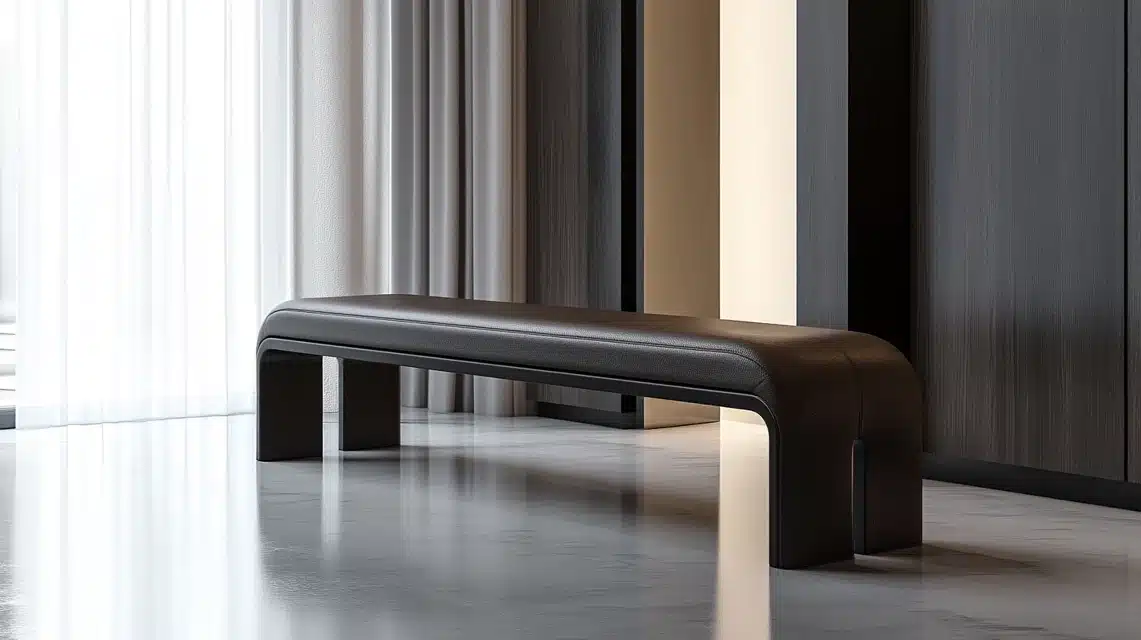
It adds flexible seating and style. Use it behind sofas or under windows. Look for heights that work well with your other furniture.
Choose materials that complement your overall design. Consider storage options inside. Ensure that the length is proportional to the placement location.
24. Dog Bed
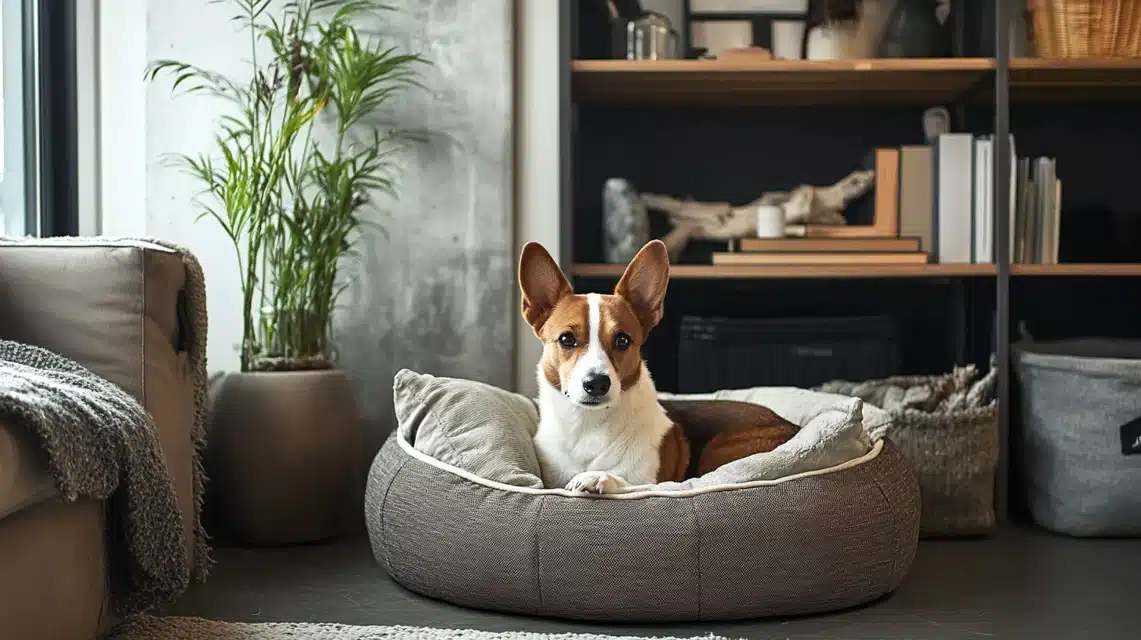
Give pets their own space that blends with your decor. Choose materials that are easy to clean—place in a spot where pets can see family activities.
Consider raised beds for older pets. Look for removable covers for washing. Select a size appropriate for your pet’s adult size.
25. Ottoman
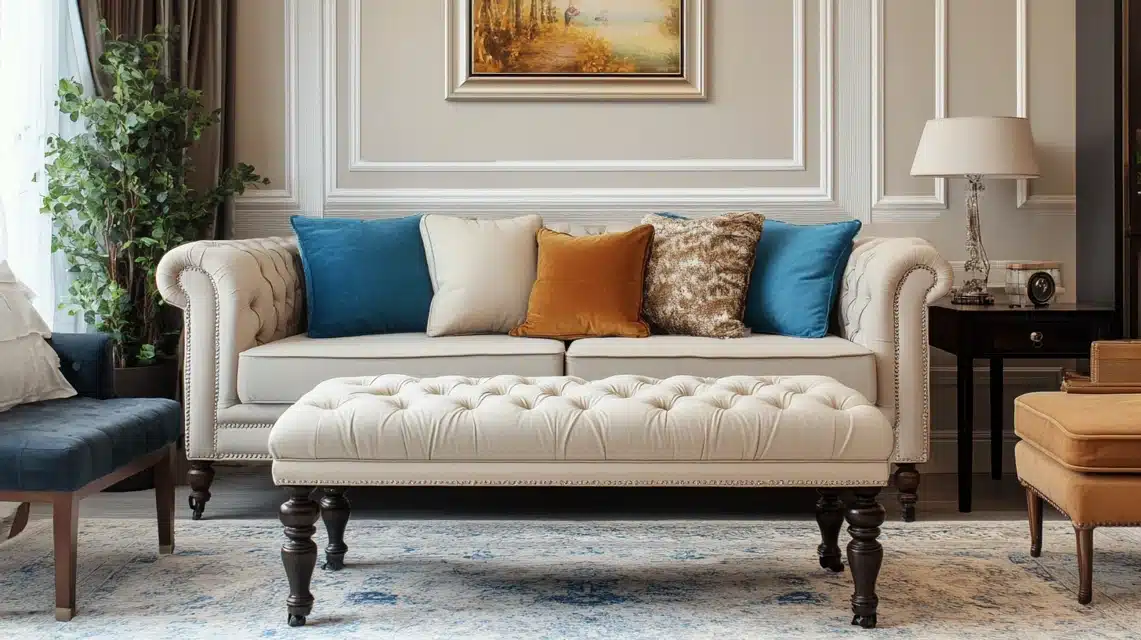
It serves multiple functions as seating, footrest, or table. Consider storage inside for extra blankets or games. The height should work well with existing seating.
Choose sturdy materials that can handle feet and serving trays. Look for styles that complement your other furniture while adding interest.
26. Bookshelf
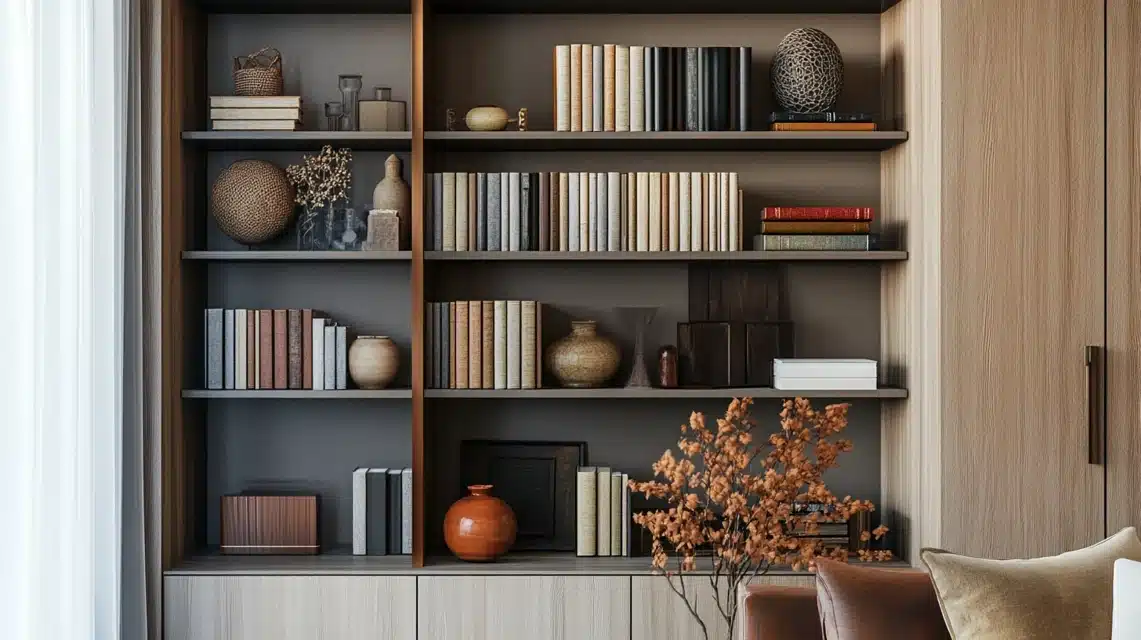
Displays books and treasures while providing storage. Consider both open and closed storage options. Arrange items with varying heights and depths.
Leave some open space for visual rest. Mix horizontal and vertical book arrangements. Use bookends for a neat appearance.
27. Credenza
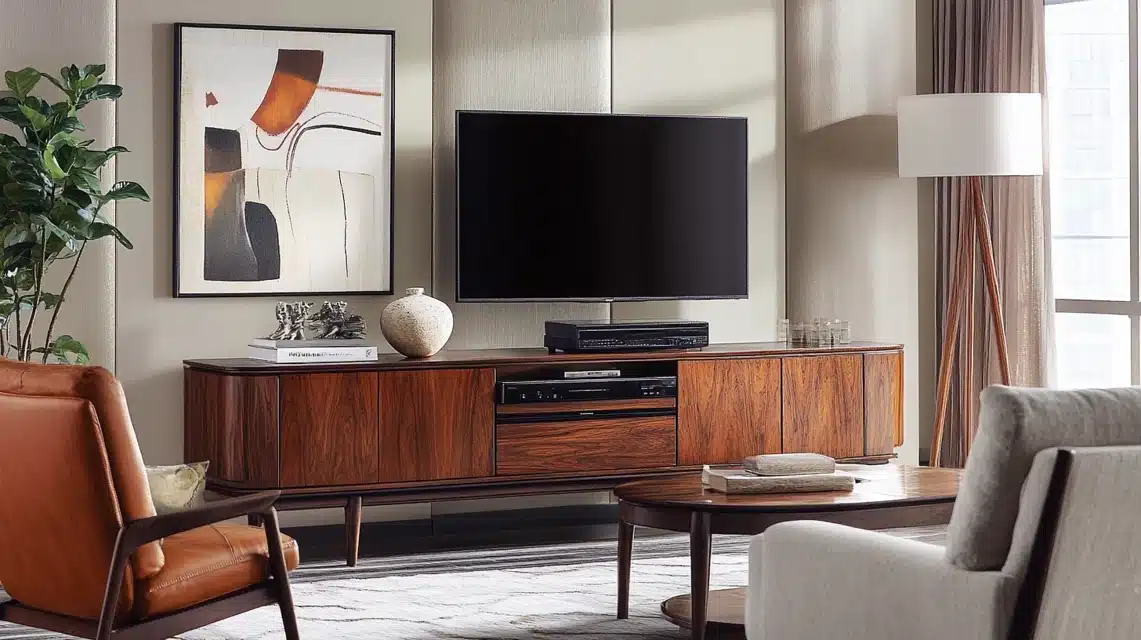
It offers storage while serving as a display surface. Choose a height that works well for your space. Look for adjustable shelving inside.
If using it for media, consider cable management. Select hardware that coordinates with other room finishes. Make sure the depth works with room traffic patterns.
28. Hutch
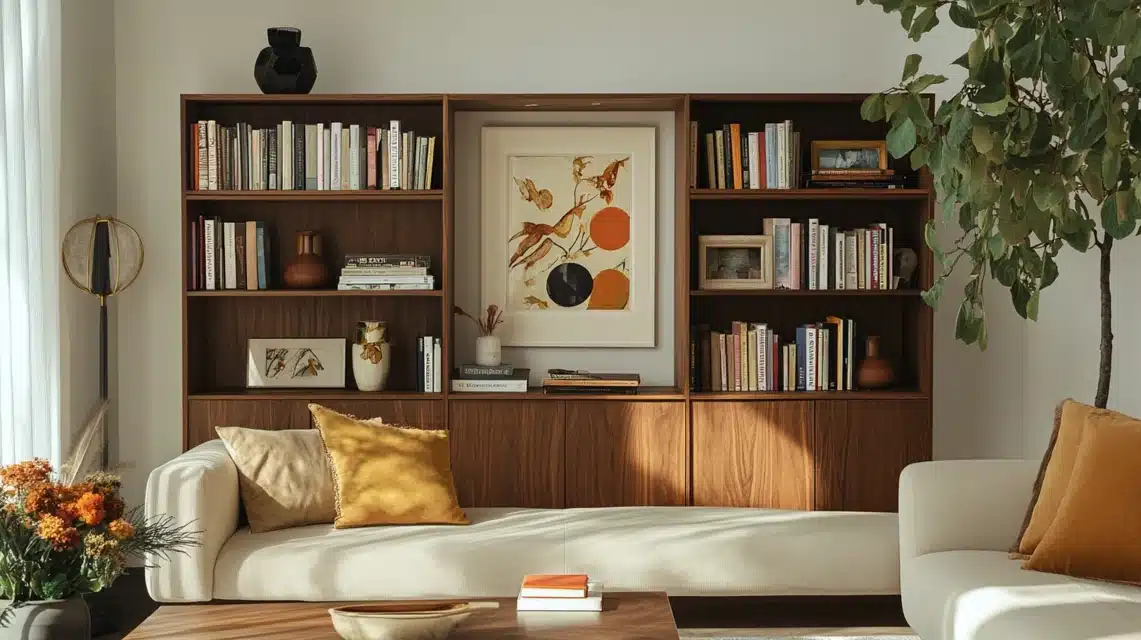
It combines storage and display in one piece. Mix closed storage below with open shelving above. Use it for books, media, or collections.
Consider lighting options for display areas. Choose a size proportional to your wall space. Make sure height works with ceiling height.
How can I make my living room functional and stylish?
To make your living room functional and stylish, start by planning your layout based on your use of the space.
Place your main seating facing each other to create conversation areas with tables within easy reach.
Add layers of lighting – mix overhead fixtures with table and floor lamps for different moods and activities.
Include storage solutions like baskets and closed cabinets to keep clutter hidden.
Choose a color scheme with two main colors and one accent shade for a pulled-together look.
Add texture through pillows, throws, and curtains.
Finally, leave enough open space for comfortable movement through the room.
How should I arrange my living room furniture?
Start by identifying your room’s focal point – often a TV, fireplace, or window.
Place your largest piece (typically the sofa) facing this focal point.
Leave 18-24 inches between the sofa and coffee table for easy movement.
Create clear walking paths at least 30 inches wide throughout the room.
Position chairs at slight angles to the sofa to encourage conversation while maintaining open sight lines. Keep end tables within arm’s reach of seating.
In larger rooms, floating furniture away from walls can create intimate groupings.
Balance the room by distributing visual weight evenly – don’t cluster all large pieces on one side.
Summing Up
Start with the essential furniture pieces that suit your space and lifestyle, then layer in lighting, textiles, and decorative elements that make the room feel complete.
Remember that a great living room evolves – you don’t need to buy everything at once.
Focus on quality for your main pieces, and have fun experimenting with smaller decor items to find the perfect balance of function and style for your home.
Frequently Asked Questions
How can I design my living room on a budget?
Focus on quality basics, shop sales for large pieces, and use affordable decor like pillows and art to refresh the look. Consider secondhand furniture for unique finds.
What are essential items for a small living room?
Prioritize a comfortable sofa, coffee table, and storage solutions. Use multi-functional furniture like ottomans with storage. Add mirrors to create the illusion of space.
What decor makes a living room cozy?
Layer soft textures with throws and pillows, add warm lighting with lamps, and include personal touches like photos and meaningful accessories.
How can I maximize storage in my living room?
Choose furniture with built-in storage, use baskets and decorative boxes, install floating shelves, and select multi-purpose pieces like storage ottomans and console tables.

